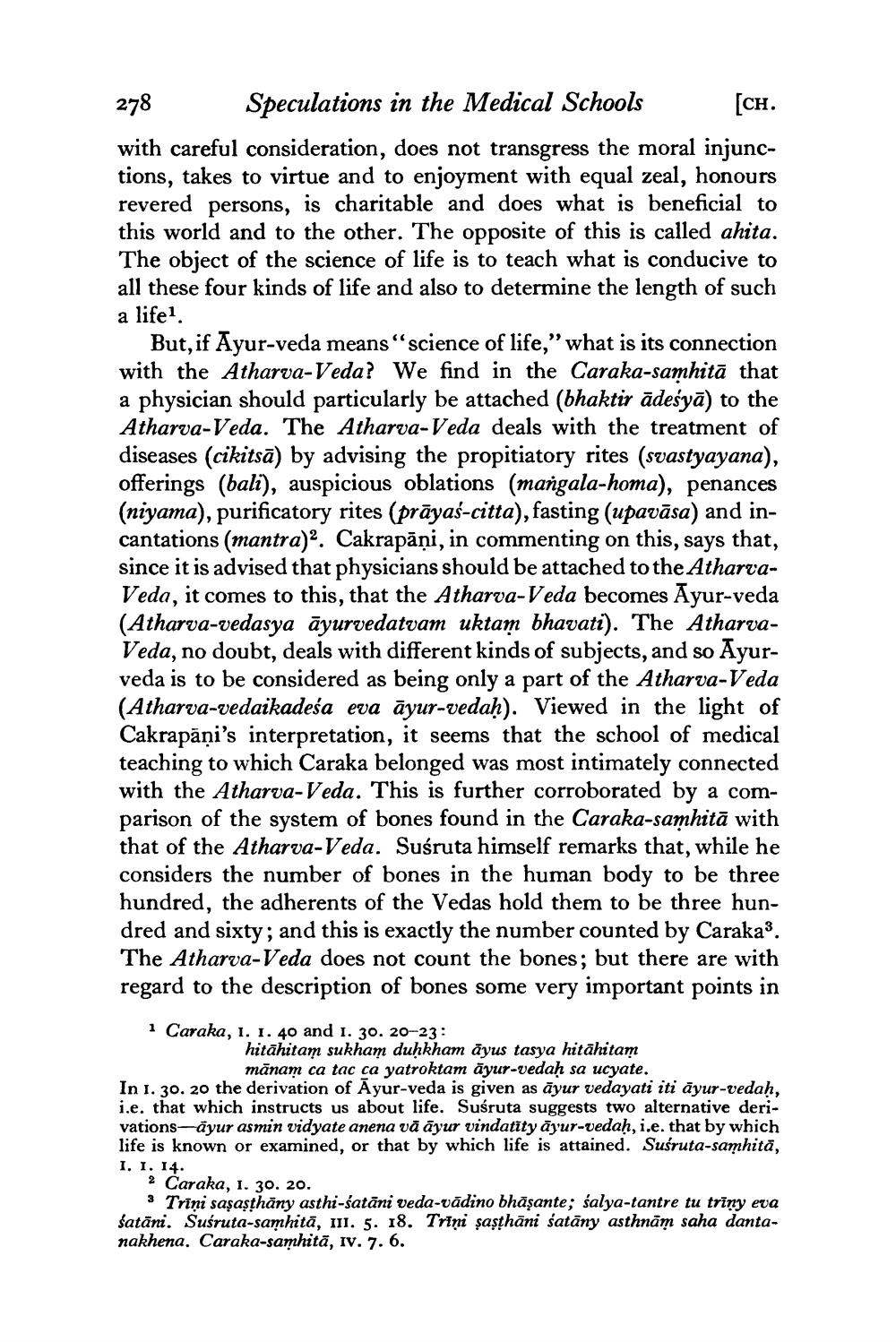________________
278 Speculations in the Medical Schools [CH. with careful consideration, does not transgress the moral injunctions, takes to virtue and to enjoyment with equal zeal, honours revered persons, is charitable and does what is beneficial to this world and to the other. The opposite of this is called ahita. The object of the science of life is to teach what is conducive to all these four kinds of life and also to determine the length of such
a lifel
But, if Ayur-veda means “science of life," what is its connection with the Atharva-Veda? We find in the Caraka-samhitā that a physician should particularly be attached (bhaktir ādeśyā) to the Atharva-Veda. The Atharva-Veda deals with the treatment of diseases (cikitsā) by advising the propitiatory rites (svastyayana), offerings (bali), auspicious oblations (mangala-homa), penances (niyama), purificatory rites (prāyas-citta), fasting (upavāsa) and incantations (mantra)2. Cakrapāņi, in commenting on this, says that, since it is advised that physicians should be attached to the AtharvaVeda, it comes to this, that the Atharva-Veda becomes Ayur-veda (Atharva-vedasya āyurvedatvam uktam bhavati). The AtharvaVeda, no doubt, deals with different kinds of subjects, and so Ayurveda is to be considered as being only a part of the Atharva-Veda (Atharva-vedaikadeśa eva āyur-vedaḥ). Viewed in the light of Cakrapāņi's interpretation, it seems that the school of medical teaching to which Caraka belonged was most intimately connected with the Atharva-Veda. This is further corroborated by a comparison of the system of bones found in the Caraka-samhitā with that of the Atharva-Veda. Susruta himself remarks that, while he considers the number of bones in the human body to be three hundred, the adherents of the Vedas hold them to be three hundred and sixty; and this is exactly the number counted by Caraka?. The Atharva-Veda does not count the bones; but there are with regard to the description of bones some very important points in
hiza
i Caraka, 1. 1. 40 and 1. 30. 20-23:
hitāhitam sukham duḥkham āyus tasya hitähitam
mānam ca tac ca yatroktam āyur-vedah sa ucyate. In 1. 30. 20 the derivation of Ayur-veda is given as āyur vedayati iti āyur-vedah, i.e. that which instructs us about life. Susruta suggests two alternative derivations-āyur asmin vidyate anena vā āyur vindatity ayur-vedaḥ, i.e. that by which life is known or examined, or that by which life is attained. Suśruta-samhitā, 1. I. 14.
2 Caraka, 1. 30. 20.
3 Trīni saşaşthāny asthi-satāni veda-vādino bhāşante; salya-tantre tu triny eva śatāni. Suśruta-samhitā, ll. 5. 18. Triņi şaşthāni satany asthnām saha dantanakhena, Caraka-samhitā, iv. 7. 6.




